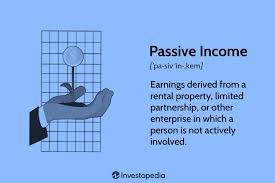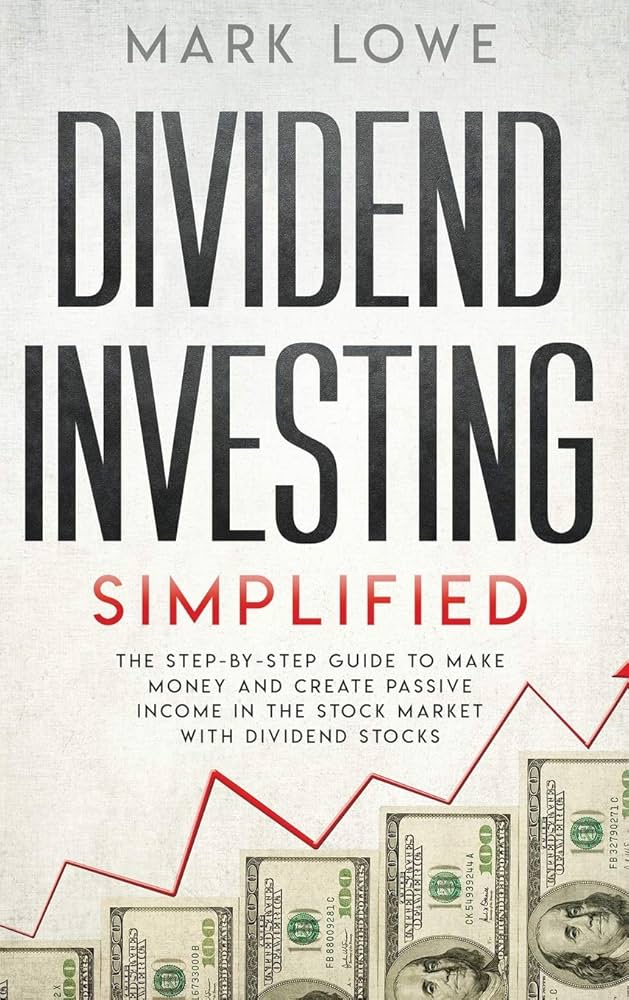Dividend investing has long been recognized as a prudent strategy for generating passive income. This approach, which involves purchasing shares of companies that regularly distribute a portion of their earnings to shareholders, can provide a steady stream of income while also offering potential for capital appreciation. In this comprehensive overview, the key aspects of dividend investing, including its benefits, risks, and strategies, will be explored.
Understanding Dividends
Dividends are payments made by a corporation to its shareholders, usually derived from profits. These payments are typically made on a quarterly basis, although some companies may choose to distribute dividends annually or semi-annually. The amount paid per share is referred to as the dividend yield, expressed as a percentage of the share price. For example, if a company pays an annual dividend of $1 per share and the share price is $20, the dividend yield would be 5%.
Benefits of Dividend Investing
Several benefits are offered by dividend investing, making it an attractive strategy for many investors:
- Steady Income Stream: A consistent source of income can be provided through dividends, which can be particularly appealing for retirees or those seeking to supplement their regular income.
- Compounding Returns: Reinvesting dividends to purchase additional shares can lead to compounding returns over time, enhancing the overall growth of an investment portfolio.
- Reduced Volatility: Stocks that pay dividends are often less volatile than non-dividend-paying stocks, as the regular income can help cushion against market fluctuations.
- Financial Health Indicator: Companies that consistently pay dividends are often seen as financially stable and profitable, providing an additional layer of confidence for investors.
Risks Associated with Dividend Investing
While dividend investing offers several benefits, it is not without risks:
- Dividend Cuts: Companies may reduce or eliminate their dividends during periods of financial difficulty, which can impact the income stream for investors.
- Interest Rate Risk: Rising interest rates can make dividend-paying stocks less attractive compared to fixed-income investments, potentially leading to a decline in share prices.
- Concentration Risk: Over-reliance on dividend-paying stocks within certain sectors (such as utilities or consumer staples) can expose investors to sector-specific risks.
- Dividend Trap: High dividend yields can sometimes be a sign of underlying financial problems within a company, making it crucial to assess the sustainability of dividend payments.
Strategies for Successful Dividend Investing
To maximize the benefits and minimize the risks associated with dividend investing, several strategies can be employed:
- Diversification: Spreading investments across a variety of dividend-paying stocks from different sectors and regions can help mitigate risks and provide a more stable income stream.
- Dividend Growth Investing: Focusing on companies with a history of consistently increasing their dividend payments can lead to higher income over time and potential capital appreciation.
- Reinvesting Dividends: Opting to reinvest dividends to purchase additional shares can compound returns and enhance the growth of an investment portfolio.
- Evaluating Dividend Sustainability: Assessing a company’s payout ratio (the percentage of earnings paid out as dividends) and cash flow can provide insights into the sustainability of its dividend payments. A lower payout ratio generally indicates a higher likelihood of maintaining or increasing dividends.
- Considering Tax Implications: Understanding the tax treatment of dividends in one’s country is important, as dividends may be subject to different tax rates compared to other forms of income.
Selecting Dividend-Paying Stocks
When selecting dividend-paying stocks, several factors should be considered to ensure a well-rounded and profitable portfolio:
- Dividend Yield: While a higher yield can be attractive, it is important to assess whether the yield is sustainable. Extremely high yields can sometimes indicate financial instability.
- Dividend History: Companies with a long track record of paying and increasing dividends are generally more reliable and stable.
- Earnings Growth: Companies with strong and consistent earnings growth are more likely to sustain and grow their dividend payments.
- Industry Position: Market leaders within stable industries are often better positioned to maintain regular dividend payments.
- Financial Health: Analyzing key financial metrics such as debt levels, cash flow, and profitability can provide insights into a company’s ability to continue paying dividends.
Building a Dividend Portfolio
Building a dividend portfolio involves careful planning and research. The following steps can guide investors through this process:
- Set Investment Goals: Determine the desired income level and growth objectives. This will help in selecting appropriate stocks and defining the overall portfolio strategy.
- Research and Select Stocks: Use financial analysis tools and resources to identify potential dividend-paying stocks that align with the set goals.
- Diversify Holdings: Spread investments across various sectors and regions to reduce risk and ensure a more stable income stream.
- Monitor and Review: Regularly review the performance of the portfolio and make adjustments as needed. This includes re-evaluating stocks that may cut or reduce dividends and staying informed about market conditions.
- Reinvest Dividends: Consider setting up automatic dividend reinvestment plans (DRIPs) to compound returns and enhance portfolio growth.
A Passive Way to Make Money in the Stock Market

In the realm of personal finance and investment, a myriad of strategies for wealth accumulation exists. Among these strategies, a passive approach to making money in the stock market has garnered significant attention. By focusing on long-term gains and minimizing active trading, investors have found a method that not only reduces the stress associated with constant market monitoring but also aligns with the principle of letting money work for the individual. The essence of this strategy will be explored, with emphasis on the core principles and methods that define passive investing.
Understanding Passive Investing
At its core, passive investing revolves around the concept of buying and holding a diversified portfolio of assets for an extended period. Instead of frequently buying and selling stocks in an attempt to outperform the market, passive investors seek to replicate the performance of a specific index, such as the S&P 500. By doing so, it is believed that consistent, long-term returns can be achieved, mirroring the overall growth of the market.
The Role of Index Funds
Index funds play a crucial role in passive investing. These funds are designed to track the performance of a specific index by holding a portfolio that mirrors the index’s composition. For instance, an S&P 500 index fund would hold shares of the 500 companies that constitute the S&P 500 index. By investing in index funds, diversification is automatically achieved, as exposure to a broad range of companies and sectors is provided.
The advantages of index funds are manifold. They are generally characterized by low expense ratios, given that the fund managers are not actively trading stocks but simply maintaining the index’s composition. Additionally, the simplicity of index funds makes them accessible to investors with varying degrees of experience and knowledge about the stock market.
Exchange-Traded Funds (ETFs)
Similar to index funds, exchange-traded funds (ETFs) offer another avenue for passive investing. ETFs are traded on stock exchanges and typically aim to replicate the performance of a specific index, sector, or commodity. The flexibility of ETFs lies in their ability to be bought and sold throughout the trading day, unlike mutual funds, which are only traded at the end of the trading day.
ETFs have become increasingly popular due to their liquidity, transparency, and low fees. A broad array of ETFs is available, catering to different investment goals and preferences. For instance, sector-specific ETFs allow investors to focus on particular industries, while broad-market ETFs provide exposure to a wide range of assets.
The Benefits of Passive Investing
The appeal of passive investing can be attributed to several key benefits. First and foremost, the approach is rooted in simplicity and ease of management. By adopting a buy-and-hold strategy, the need for constant market analysis and frequent trading is eliminated. This not only reduces the time commitment required but also minimizes transaction costs and the potential for emotional decision-making, which can often lead to suboptimal investment choices.
Another significant advantage of passive investing is the potential for consistent returns over the long term. Historical data has shown that the stock market tends to grow over time, despite short-term volatility. By staying invested and avoiding the temptation to time the market, passive investors can benefit from the compounding effect of returns, which can significantly enhance wealth over decades.
Risk Mitigation through Diversification
Diversification is a fundamental principle of passive investing. By holding a broad array of assets, the impact of poor performance in any single stock or sector is mitigated. This reduces the overall risk of the investment portfolio. Index funds and ETFs inherently provide diversification, as they represent a wide range of companies and industries.
Furthermore, passive investing encourages a long-term perspective, which can help weather market downturns. While short-term market fluctuations are inevitable, a well-diversified portfolio is more likely to recover and continue growing over time.
Dollar-Cost Averaging
Another technique often employed in passive investing is dollar-cost averaging. This involves regularly investing a fixed amount of money into the stock market, regardless of its current performance. By doing so, the purchase of more shares when prices are low and fewer shares when prices are high is facilitated, thereby averaging the cost per share over time.
Dollar-cost averaging can reduce the impact of market volatility and eliminate the stress of trying to time the market. It is a disciplined approach that aligns well with the principles of passive investing, ensuring consistent contributions to the investment portfolio.
The Role of Technology and Automation
In recent years, the advent of technology and automation has further simplified passive investing. Robo-advisors, for instance, are digital platforms that provide automated, algorithm-driven financial planning services. By collecting information about an investor’s financial situation and goals, robo-advisors can create and manage a diversified portfolio that aligns with passive investing principles.
Robo-advisors typically offer low fees and require minimal input from the investor, making them an attractive option for those seeking a hands-off approach to wealth management. By leveraging technology, the barriers to entry for passive investing have been significantly lowered.
Conclusion
Dividend investing can be a highly effective strategy for generating passive income and achieving long-term financial growth. By understanding the benefits, risks, and strategies associated with this approach, investors can build a robust and diversified dividend portfolio. While careful research and ongoing portfolio management are required, the rewards of dividend investing can be substantial, offering both income and the potential for capital appreciation over time.










